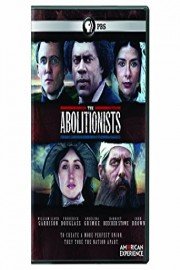


-
Genres
-
Channel
-
Premiere DateJanuary 8, 2013

American Experience: The Abolitionists is a documentary series that explores the lives and struggles of the men and women who fought to end slavery in the United States. This six-part series, produced by WGBH Boston and airing on PBS, tells the story of how the abolitionist movement emerged in the early 1800s, grew in strength and influence over the decades leading up to the Civil War, and eventually helped to transform American society.
The series features a range of fascinating individuals who were instrumental in the abolitionist movement, including William Lloyd Garrison, a fiery journalist and publisher who founded the anti-slavery newspaper The Liberator; Frederick Douglass, a former slave who became one of the most eloquent and influential abolitionist speakers and writers of his day; Harriet Beecher Stowe, the author of Uncle Tom's Cabin, a bestselling novel that galvanized anti-slavery sentiment across the country; and John Brown, a militant abolitionist who led a raid on a federal arsenal in Harpers Ferry, Virginia, in an ill-fated attempt to spark a slave rebellion.
The Abolitionists is not just a story of great individuals, however. It is also a story of the larger social and political forces that shaped their lives and struggles. The series examines the root causes of slavery in the US, the economic and political interests that sustained it, the ideological debates that raged over its future, and the horrors of slavery itself. Through a combination of archival footage, expert interviews, and dramatic reenactments, the series brings this complex and often troubling history to life in vivid detail.
One of the things that sets The Abolitionists apart from other documentaries about slavery and the Civil War is its emphasis on the role of women in the abolitionist movement. While women's history has often been overlooked in traditional accounts of this period, The Abolitionists highlights the crucial contributions of women like Angelina Grimké, Sarah Grimké, and Lucretia Mott, who fought not just for the end of slavery, but also for women's rights and equality.
Another strength of The Abolitionists is its nuanced exploration of some of the tensions and conflicts within the abolitionist movement itself. While most abolitionists were united in their opposition to slavery, they often disagreed over the best strategies for achieving their goals. Some favored gradualism, arguing that slavery should be abolished gradually and peacefully through legislative means. Others favored immediate abolition, and believed that slavery was so immoral and inhumane that it needed to be ended quickly and forcefully, even if it meant breaking the law or resorting to violence.
The series also examines the ways in which race and racism often complicated and undermined the abolitionist cause, even among those who claimed to be anti-slavery. Many abolitionists were white, and some held deeply racist views, even as they worked to end slavery. Others, like Frederick Douglass, pushed for a more radical and transformative vision of racial justice and equality, and forged crucial alliances with black activists and organizations.
Overall, The Abolitionists is a powerful and illuminating series that will be of interest to anyone interested in American history, social justice, and the fight for human rights. Through its vivid storytelling and frank examination of the complexities and contradictions of the abolitionist movement, it offers important insights into the ongoing struggle for racial justice and equality in the United States. Whether you are a history buff, a social activist, or simply someone looking to learn more about this pivotal chapter in American history, The Abolitionists is a must-watch.



